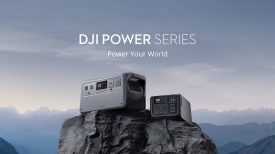Guest post by Cubie King
Armed with two 7Ds and four lenses we roll out light but return with hefty results.
Before shooting we draw out a game plan and determine how best to execute it. We know what’s needed and what’s not.
The tone of “Japan Society: A History of Support” was set by Japan Society’s Director, Joe Earle. Articulate and erudite on Japanese-American relations Earle was a pleasure to interview. His distinctive cadence and a artful way of transitioning from one thought to the next informed the edit.
The interview was shot dual camera. A 50mm on the low left, a 100mm off-center right. Sound was captured independently. An audio recorder (Zoom H4n) was placed on the table in front of Mr Earle.
Conscious of the camera’s 12-minute maximum clip length we cut and started up again during intervals in the Q&As. The Zoom recorded one track of audio for the entire interview. Natural sound of a waterfall and gallery room tone was recorded separately.
In post the Zoom’s audio file was run through Soundtrack Pro for noise reduction, to minimize the waterfall sound. The 7D’s recorded audio was used as a reference track, synced with the Zoom’s track, then discarded.
Japan Society itself was very tranquil and called for an reserved, observational stance. The gallery was dimly lit. We leaned heavily on high ISOs (up to 2500) and low apertures. Everything was shot with available light.
The exhibition Bye Bye Kitty!!! had several visually alluring pieces that we aimed to capture without complication. In fact the artwork was so arresting we shot spectators observing it devoid of flamboyant photographic techniques and we’re very pleased with the results.
Once edited the piece was color graded in Apple Color. The main objectives were to balance the two interview cameras and bring down the overall warmth of the piece. We also increased saturation, added modest grain where appropriate to balance varying ISOs, and sharpened images.
We approached “Rally to Support The American Dream” completely differently. From the outset we planned on making a monochrome news piece. Given the subject matter, a hastily planned political protest in front of city hall, we shot guerrilla-style.
There were two filmic references that informed the shoot: John Ford’s Grapes of Wrath (1940; dp: Greg Toland) and How Green Was My Valley (1941; dp: Arthur Miller). Both films feature naturalist cinematography that challenged classical Hollywood studio photography of the period. A realist approach mirroring the work of Depression-era photographers like Dorothea Lange and Walker Evans. Both films also deal specifically with the hardships of the working class people, and unions, and we wanted to emulate that mood.
The term “timeless” came up repeatedly in our pre-production meeting. Protests such as this exist within a larger national and historic context and the abstractness of black and white would be used to untie us with that past. We anticipated an emotional crowd and decided not to shy away from it. In fact, we embraced it.
We also planned to incorporate still images. Strong, unvarnished compositions of faces and signs. Raw and direct. We also calculated shooting stills would allow us to cover more ground and open up the piece up to more creative options.
The sound of the crowd’s chants “What’s disgusting? Union busting!,” Charlie Rangel’s soundbite and the final “The American Dream…was built with our hands” sequence were captured with the 7D’s built-in mic. So, in certain situations, that mic can be useful.
Once picture-locked the footage was converted to black and white in Color 1.5. We created a custom black and white color grade that we applied to each shot but, of course, each shot was seasoned to taste. The monochrome color grade leaned into deep-mids and heavy blacks, a strong contrast. A light film grain and sharpening was also applied.
Stills were treated similarly in Lightroom 3. All graphical elements, including pushes on stills, were done in Apple Motion.
“Rally to Support The American Dream” took roughly 10 hours to complete from shooting to final export. ”Japan Society” was shot in two hours and took about two days to edit.
I’ve always looked at traditional news gathering and presentation through a different lens. For almost a decade I’ve worked for three traditional news outlet and have often witnessed the visual and aural elements of a story casually sacrificed in the name of expediency and standardization. No matter the story, the structure remains unchanged.
Dan Chung’s statement that “cinematic techniques [allow] people [to] connect to and care about news” is apt. Indeed, one could argue that the rapid ascendancy, commercialization, and audience acceptance of short and feature-length documentaries over the past decade – assisted with access to cheaper, pro-sumer grade equipment and software – calls for a reevaluation of how particular news stories and elements are gathered and presented. And the new and ubiquitous pixel-rich platforms of mobile phones, tablets, and HD screens complement a “cinematic” approach more ever.
DSLRs can be a legitimate game changer in news. For those whose ultimate goal is to service the story visually, aurally, narratively…it’s time to step up.






